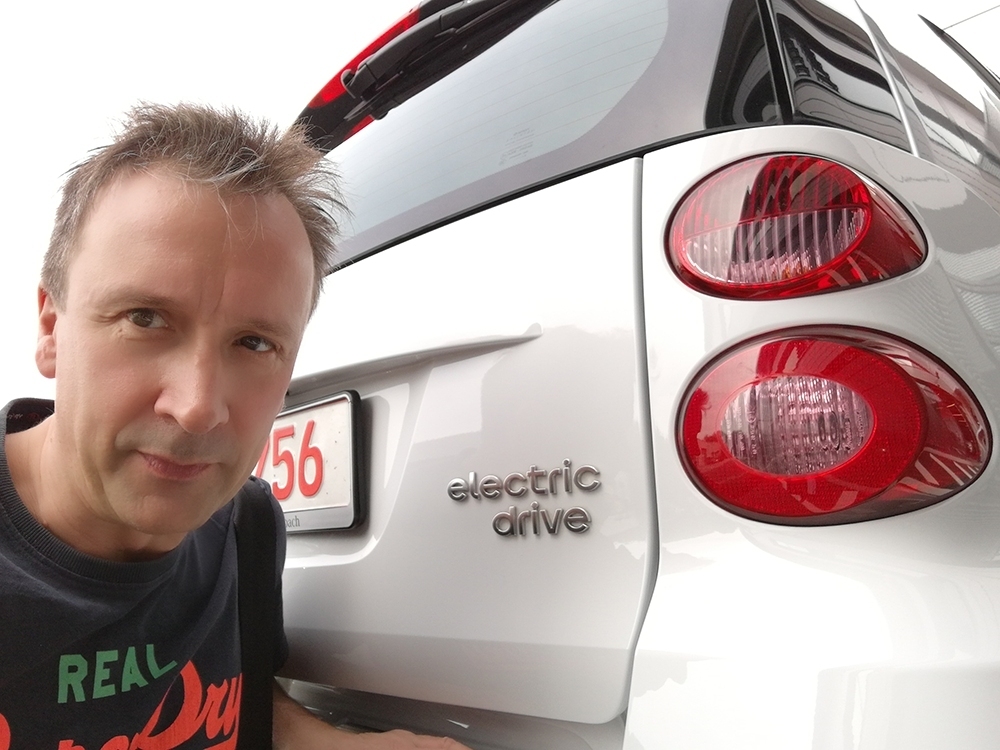At a classic car event in 2015, I met someone with an impressive collection of cultural heritage on four wheels. When I asked: “What is your daily drive?“, he whispered to me saying that he drives a Mitsubishi electric and would never go back to combustion. To me, that was an unexpected answer. Among car enthusiasts, electric cars had been considered as sexy as long underwear. Impressed and shocked at the same time, I too began to get interested in electric cars. Eventually, while we were working on designs for E.ON charge poles, I took the opportunity to buy a second hand fully electric car for “business reasons”. Have you ever experienced driving an electric car? While it is not the immediate sensation of “wow” like your first motorbike ride, it quietly and slowly takes over you. The acceleration will make any Porsche driver jealous when racing you to the next set of traffic lights. And, to no surprise, it is as easy to operate and maintain as a hairdryer.

I enjoyed my time as an “early adopter“, though it seemed that everybody else knew better than me why this cannot be the future: “Don’t forget the rare minerals in Congo are almost depleted!” and “I heard it’s dangerous to grab the door handle when it’s raining!”. As with many topics, forwarded and unevaluated messages on social media are the main source of “information” to a substantial amount of people.
I attended the electromobility congress “Hypermotion” recently and a presenter thought he would surprise the audience with the fact that “Surveys show that 70% of electric cars are being charged up at home!”
Excuse me? If you would drive electric you would know that there is mostly no other opportunity, as the few charge poles available to us in the cities are permanently sieged.
In the beginning, I figured a public charge point would be a place to meet nice people with the same attitude; a place to chat about sustainability or new technologies. But when access to the ever scarce source of energy is contested, things are quite different…We’ve all seen people reserve deckchairs at the hotel pool in the early morning, regardless of whether they actually show up. I can confirm that the same strategies are being used at the charge point. “Someone else might take it if I do not.”
Here comes a twist: the true benefit of space at the charger is not to improve the battery status of your car, but rather the unlimited parking time for free. Engineers gave us fast DC charging, allowing you to charge up to 80% in no more than 30 minutes. But half an hour is too long for a cigarette break and too short for a shopping tour downtown. That is why the slow AC plug is so popular and desirable.
There are some reasons why they haven’t built as many charge points as would be required. One is the measuring of electricity.
Shouldn’t measuring the amount of used electricity be as easy as it is at home? Sorry, we had to reinvent it and that takes time in good old Germany. For the time being, we have to wait for more public chargers that are compliant with the specs of Physikalische Technische Bundesanstalt.
Whenever technology is about to change, we tend to focus on the issues we will face. And while that can be a healthy attitude, I wish everybody also considered the advantages that justify overcoming those challenges. We got used to petrol and diesel engines, as we have those in operation for 100 years already. Go ahead and look inside one or take one apart, you will be amazed at how complex they have become and how difficult it is to get them to run. Hundreds of metal and rubber components, all running in a dirty bed of oil. A complex organism with countless weak spots and generally unsustainable behavior. All of this has been made completely obsolete by a small, silent, and clean motor with no need for maintenance.
Electromobility is new and it is fantastic. Let us develop this new and sustainable technology and the infrastructure hand in hand as fast as possible. We at Gofore are convinced that this is the future on the way to the zero-emission goals. We have been working on various related projects for years: we designed ergonomic public chargers, we developed state of the art software for charge platforms and we will be happy to make further contributions.



